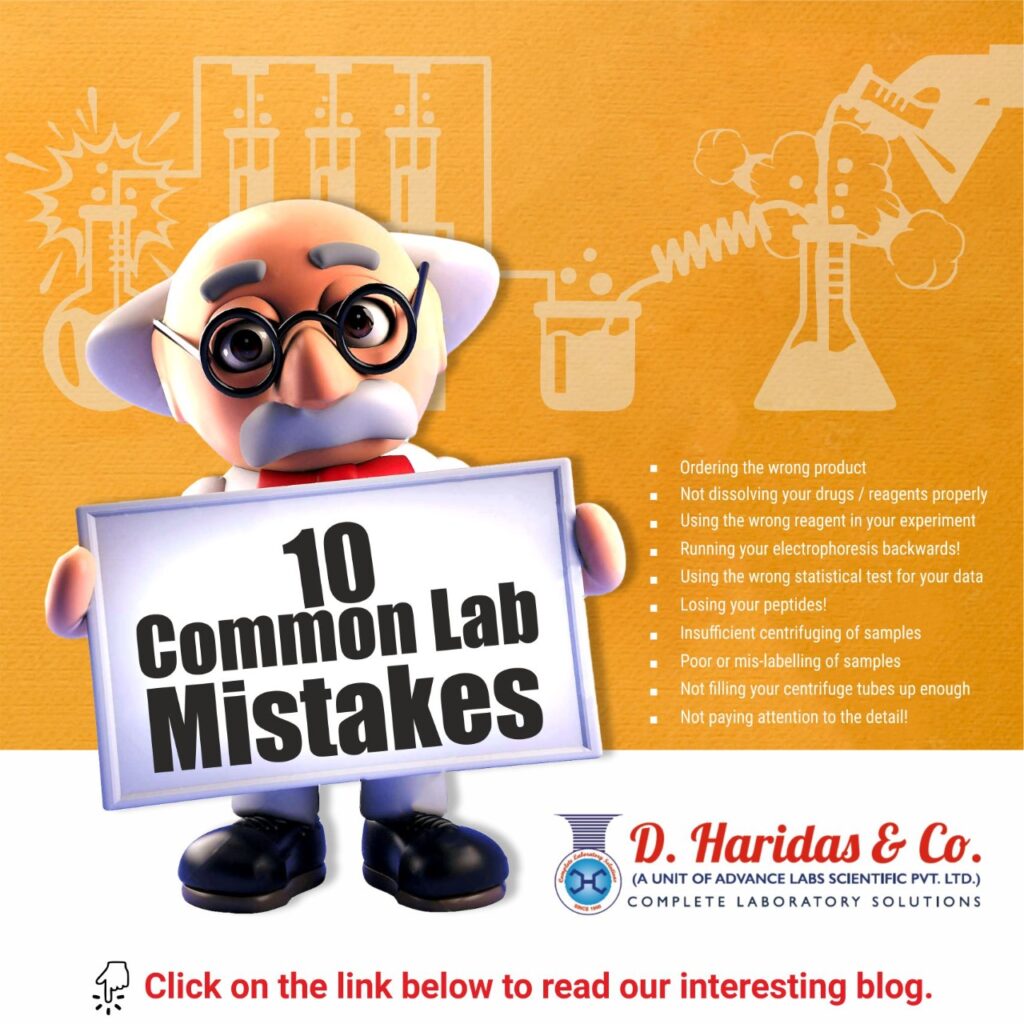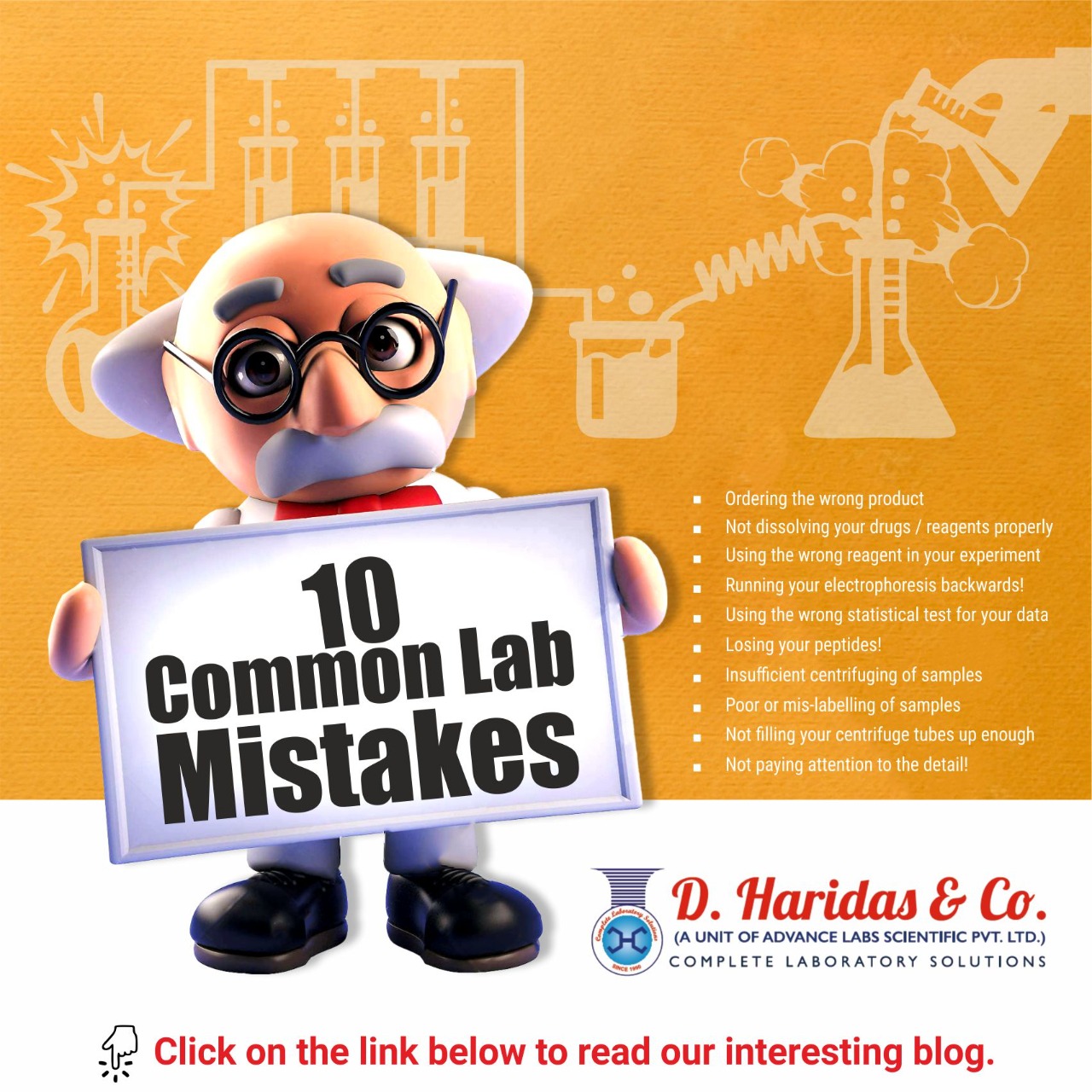10 common lab mistakes! Leave a comment

Ten common lab mistakes!
It’s not easy to work in the laboratory. With every experiment, there is so much to remember, new protocols, new systems, new techniques to grip with.
1) Ordering the wrong product
There is often a bewildering array of instruments, chemical compounds, lab glassware and other variants in supplier catalogs that you need to navigate. From ordering reverse complement primers to ordering low quality products by mistake the consequences of the wrong purchase are obviously the loss of time and money. So double check before ordering.
2) Not dissolving your drugs / reagents properly.
Drugs / Reagents are not dissolved completely or they may precipitate out in your buffer. This means that you will not be using the drug at the concentration that you think you are. The solution to this is to read your product datasheet carefully, to find out what you have to do – warming or sonicating – but also – don’t forget to use your eyes, and hold your sample up to the light to check that everything has dissolved.
3) Using the wrong reagent in your experimentThe consequences of these sorts of mistakes are far reaching. You have to re-run the experiment or technique. Real life examples include adding B-mercaptoethanol instead of TEMED when preparing a polyacrylamide gel, using the wrong secondary antibody and adding incorrect reagents before reading the bottle properly. So we suggest read labels, check, check and check again!
4) Running your electrophoresis backwards
If you mistakenly invert the connector cables on the power supply and run the electrophoresis backwards, you lose your samples. It’s a mistake that even experienced researchers can make. I hope you have to do not repeat an entire experiment which takes more than a week to create new samples.
5) Using the wrong statistical test for your data
Data rules the world. Using the wrong statistical analysis on data is a mistake that can cost a lot of time. If you form your conclusions based on an inappropriate analysis of your results, you could end up misinterpreting your data. And the statistical test that your lab colleague uses may not be appropriate for you if your experiment is different. The solution is to decide on your method of analysis at the planning stage and if you are no statistical expert, make sure you check with a supervisor that you are choosing the right one.
6) Losing your peptides
When you finished freeze drying peptides, make sure you open the vacuum release valve very slowly.Or the fruit of yout hard work will flow all over the place and disappear right in front of your eyes.
7) Insufficient centrifugation of samples
Not spinning solubilised samples at high enough speed in an ultracentrifuge before co-immunoprecipitation is a common mistake. If you don’t use a high enough centrifugation force (e.g. 100,000 x g or higher) then non-solubilised membrane components and protein aggregates will remain in the sample. These will be subsequently identified as ‘interaction partners.
8) Poor or mis-labelling of samples
This is an obvious one – if you muddle up your samples, then you have to go back to square one, and start your experiment again. If handwriting labels, make sure they are legible, and if you are using a physical label (rather than writing on your vial) always use a label suitable for your needs ie. does it need to withstand a freezer or water bath. And always be consistent in the way you label things follow your lab protocols, and there is less room for confusion.
9) Not filling your centrifuge tubes up enough
Another mistake, forgetting to fill up your ultracentrifuge tubes with liquid. The tubes will collapse at high speed if you leave them half empty.
10) Not paying attention to the details
With many techniques, the secret to a successful experiment is to consistently and accurately follow a protocol. For example, in the electrophysiology lab, paying attention to solution flow rates, achieving a stable recording base line, and constructing effective stimulating electrodes all contribute to a successful result.
It’s not easy to admit to mistakes. Have you ever made any mistakes in the lab? Share in the comments below.

